As parents, we all want to see our children grow up to be smart, focused, and full of energy. What many people don’t realize is that these qualities are shaped not just by learning and play — but by the foods your toddler eats every day. The early years of life are a period of explosive brain growth, where neurons form new connections at lightning speed. To fuel this rapid development, toddlers need brain-nourishing foods that supply essential nutrients like omega-3 fatty acids, choline, iron, zinc, and antioxidants.
In this comprehensive guide, we’ll share scientifically-backed, delicious, and toddler-approved brain food recipes that support memory, learning, and emotional health — while also satisfying your little one’s taste buds. From smoothies to pancakes, these meals are designed to make healthy eating fun, flavorful, and fuss-free.

Understanding Toddler Brain Development and Nutrition
Between ages one and three, your toddler’s brain triples in size and reaches about 80% of its adult volume. This is the critical window for establishing strong neural pathways that affect your child’s thinking, language, and behavior. Nutrition plays a vital role in how these connections form and function.
Here are some of the most important brain-boosting nutrients your toddler needs:
- Omega-3 fatty acids (DHA and EPA): Essential for brain structure, visual development, and cognitive performance. Found in salmon, chia seeds, flaxseeds, and walnuts.
- Iron: Helps oxygen reach brain cells, supporting attention and learning. Found in spinach, lentils, red meat, and fortified cereals.
- Choline: Key for building memory centers in the brain. Found in eggs, lean meats, and soybeans.
- Zinc: Crucial for neurotransmitter function and brain communication. Found in chickpeas, pumpkin seeds, and whole grains.
- Antioxidants: Protect brain cells from oxidative stress and aging. Found in berries, leafy greens, and colorful vegetables.
By incorporating these nutrients into your toddler’s meals, you’re giving them the mental fuel to grow, explore, and thrive.
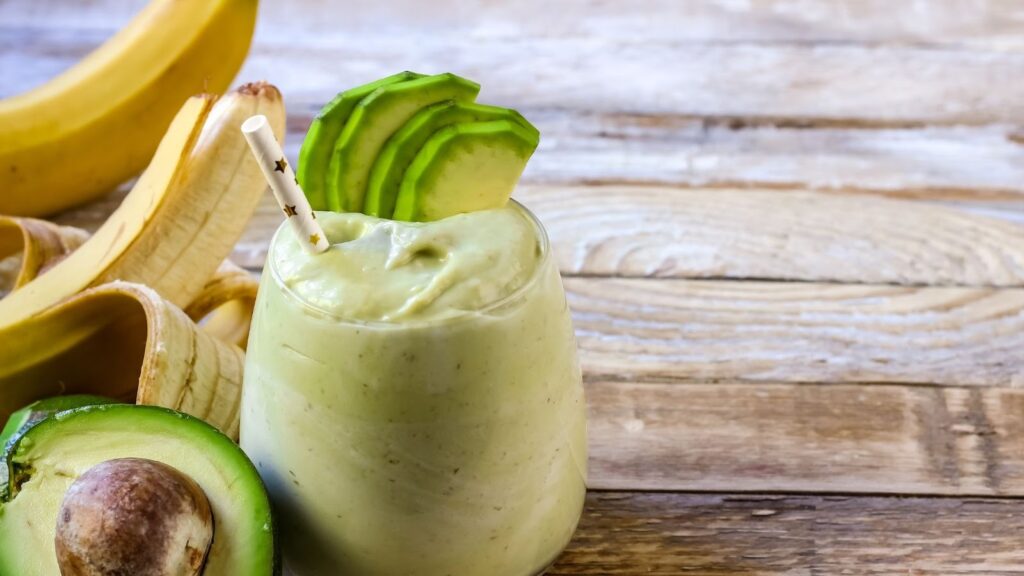
1. Creamy Avocado and Banana Brain Boost Smoothie
Why This Recipe Works
Avocados are nature’s butter — rich in healthy monounsaturated fats that improve brain blood flow. Combined with potassium-packed bananas and protein-rich Greek yogurt, this smoothie offers a perfect blend of nutrients for sustained energy and focus.
Ingredients
- ½ ripe avocado
- 1 ripe banana
- ½ cup plain Greek yogurt
- 1 tsp chia seeds (for omega-3s)
- ½ cup milk (dairy or almond)
- Drizzle of honey (for toddlers over 1 year)
Instructions
- Place all ingredients in a blender.
- Blend until smooth and creamy.
- Pour into a fun, colorful cup and serve chilled.
Pro Tip: Add spinach or kale for extra iron — your toddler won’t even taste it!
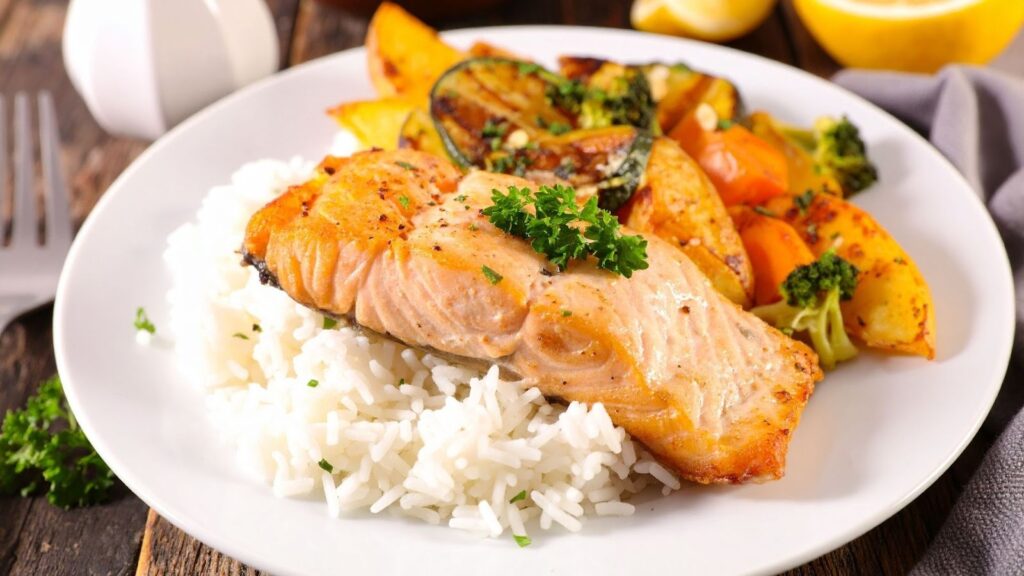
2. Mini Salmon and Sweet Potato Patties
Why This Recipe Works
Salmon is one of the best natural sources of DHA, the brain’s favorite fat for growth and learning. Sweet potatoes add beta-carotene, fiber, and natural sweetness that toddlers love.
Ingredients
- 1 small cooked salmon fillet (boneless and flaked)
- ½ cup mashed sweet potato
- 1 egg yolk
- 1 tbsp breadcrumbs
- 1 tsp olive oil
Instructions
- Mix salmon, sweet potato, egg yolk, and breadcrumbs.
- Form small, bite-sized patties.
- Heat olive oil in a nonstick pan and fry until golden brown on both sides.
- Serve with a dollop of yogurt or mashed avocado dip.
Make Ahead Tip: Cook extra patties and freeze them for quick meals on busy days.
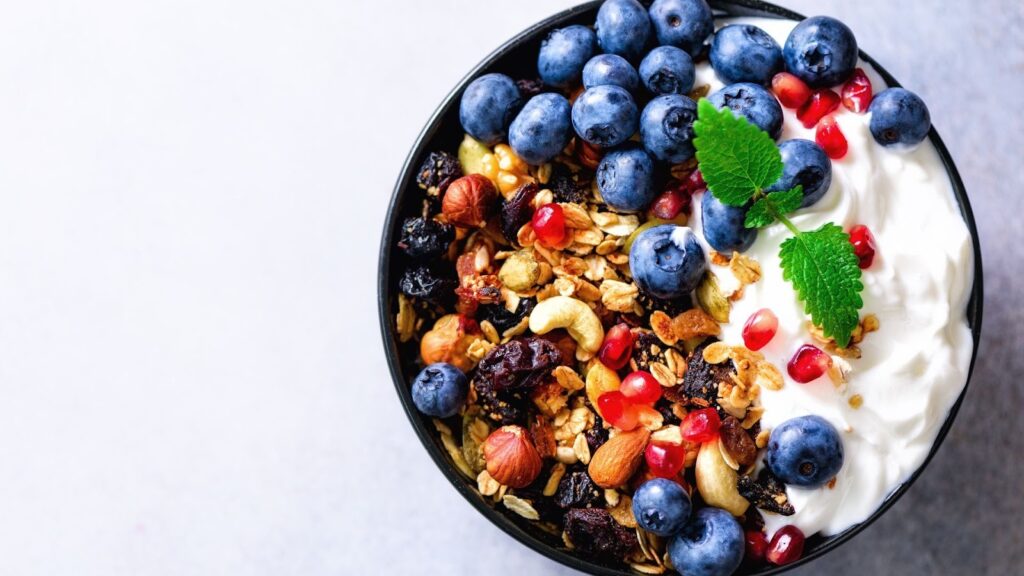
3. Blueberry Oatmeal Power Bowl
Why This Recipe Works
Oats provide complex carbohydrates that release energy steadily throughout the day — perfect for keeping your toddler’s brain fueled. Blueberries are packed with anthocyanins, which improve memory and protect neurons.
Ingredients
- ½ cup rolled oats
- 1 cup milk
- ¼ cup blueberries (fresh or frozen)
- 1 tsp flaxseed powder
- 1 tsp natural sweetener (like maple syrup or mashed banana)
Instructions
- Cook oats in milk until soft.
- Stir in blueberries and flaxseed powder.
- Add sweetener and mix well.
- Serve warm with a sprinkle of cinnamon.
Nutrient Boost: Add chopped walnuts or almond butter for extra omega-3s.
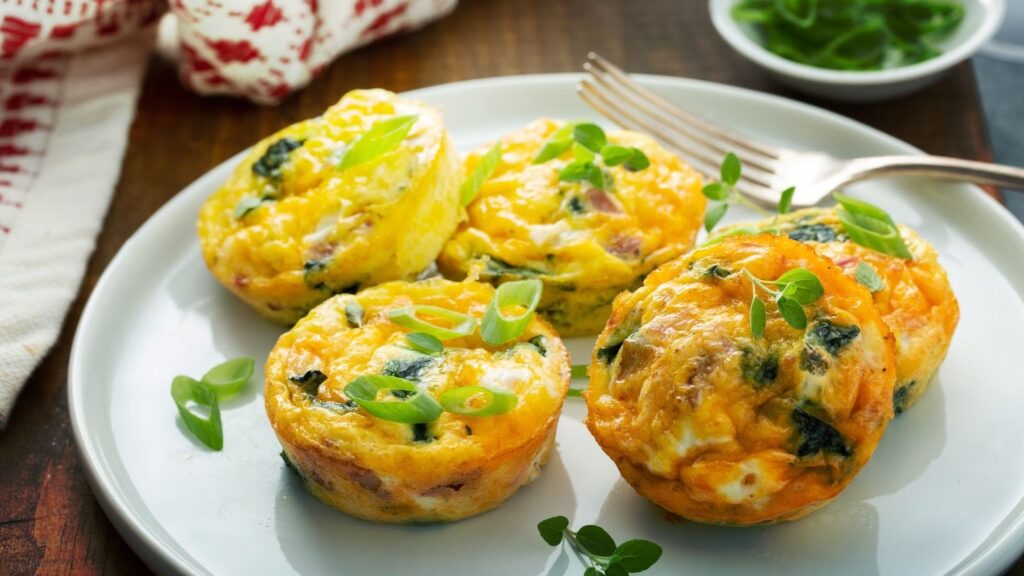
4. Spinach and Cheese Egg Muffins
Why This Recipe Works
Eggs are often called “nature’s multivitamin” — loaded with choline, vitamin B12, and protein that enhance memory and focus. Combined with spinach, this recipe supports both brain and muscle development.
Ingredients
- 3 large eggs
- ¼ cup chopped spinach
- ¼ cup grated cheese (cheddar or mozzarella)
- 1 tbsp milk
- Pinch of salt and pepper (optional)
Instructions
- Preheat the oven to 350°F (175°C).
- Whisk eggs and milk together.
- Stir in spinach and cheese.
- Pour the mixture into greased mini muffin tins.
- Bake for 15–20 minutes or until firm and lightly golden.
Perfect for Lunchboxes: These muffins are protein-packed and travel-friendly.
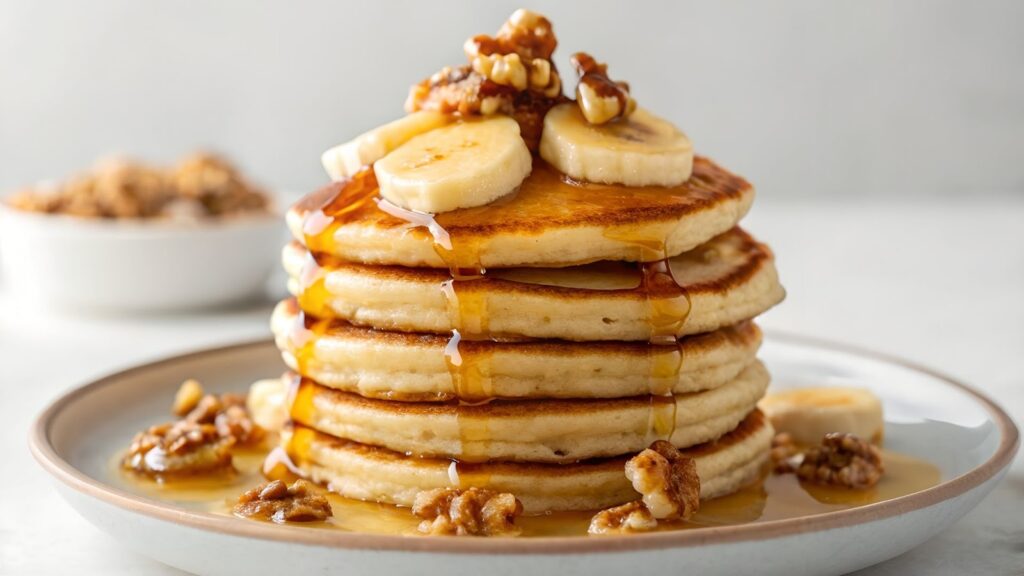
5. Nutty Banana Pancakes
Why This Recipe Works
Bananas provide natural energy and potassium, while nuts like walnuts and almonds contain omega-3 fatty acids that strengthen brain cell membranes. Together, they create a nutritious and satisfying breakfast or snack.
Ingredients
- 1 ripe banana
- 1 egg
- 2 tbsp whole wheat flour
- 1 tbsp ground almonds or walnuts
- Butter or coconut oil for cooking
Instructions
- Mash the banana and whisk in the egg.
- Add flour and nuts to form a smooth batter.
- Heat a small amount of butter or oil in a nonstick pan.
- Pour small circles of batter and cook until golden.
- Serve with Greek yogurt or fruit slices.
Healthy Tip: Replace wheat flour with oat flour for a gluten-free option.
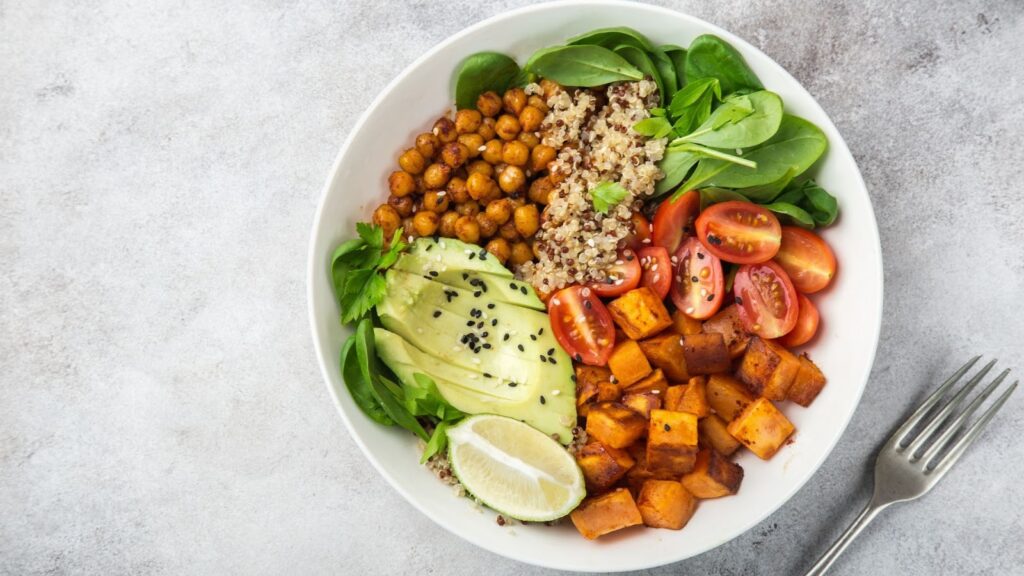
6. Veggie-Loaded Quinoa Bowl
Why This Recipe Works
Quinoa is a complete protein with all nine essential amino acids. It’s also rich in iron, magnesium, and B vitamins, which boost brain health and energy production.
Ingredients
- ½ cup cooked quinoa
- ¼ cup chopped carrots
- ¼ cup peas
- ¼ cup corn
- 1 tsp olive oil
- Pinch of salt
Instructions
- Steam or boil the vegetables until soft.
- Mix them with quinoa and olive oil.
- Serve warm as a wholesome lunch or dinner.
Add-On Idea: Mix in shredded chicken, tofu, or lentils for extra protein.
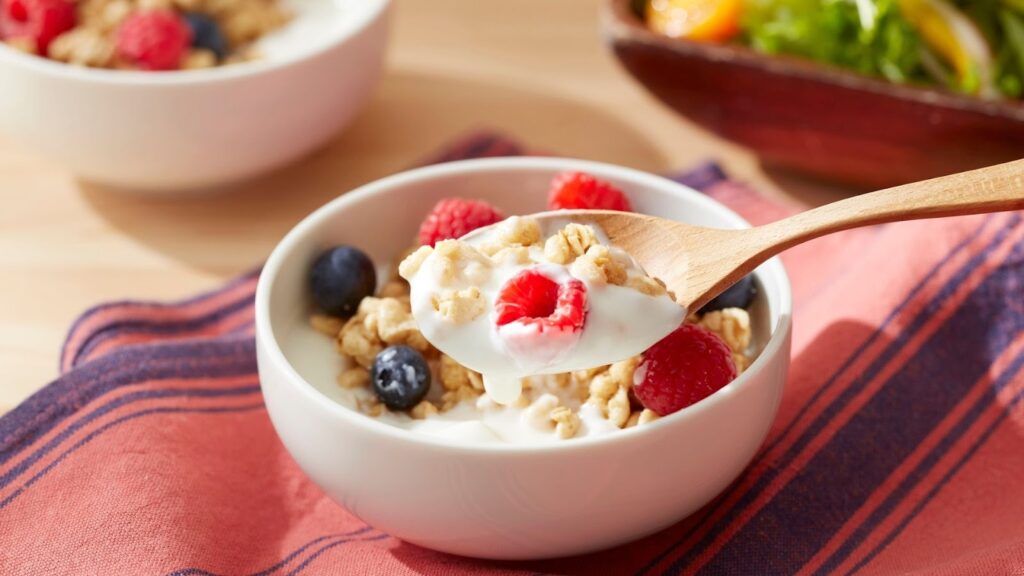
7. Yogurt Parfait with Berries and Granola
Why This Recipe Works
Yogurt is full of probiotics that support gut health — and since the gut and brain are closely connected, this means better mood and cognitive function. Berries provide antioxidants for memory and concentration.
Ingredients
- ½ cup plain Greek yogurt
- ¼ cup mixed berries
- 2 tbsp granola
- 1 tsp honey (optional)
Instructions
- Layer yogurt, berries, and granola in a clear cup or bowl.
- Drizzle with honey for sweetness.
- Serve as a healthy breakfast or mid-morning snack.
Variation: Add crushed walnuts for an omega-3 boost.
Tips to Encourage Healthy Eating Habits in Toddlers
Feeding toddlers can be a challenge, especially when they’re exploring independence. Try these parent-tested strategies:
- Serve colorful plates: A mix of colors excites curiosity.
- Cut foods into fun shapes: Stars, hearts, or animals make meals exciting.
- Involve them in preparation: Let toddlers stir, pour, or choose toppings.
- Offer variety: Rotate between sweet and savory brain foods to prevent boredom.
- Avoid pressure: Encourage, but don’t force — gentle exposure builds acceptance.
Foods to Limit for Better Brain Health
To ensure optimal brain performance, minimize foods that can interfere with cognitive function:
- Refined sugars – cause mood swings and hyperactivity.
- Processed foods – often contain additives and preservatives.
- Fried foods – increase inflammation in the brain.
- Artificial sweeteners and colors – linked to behavior issues in some children.
Instead, focus on whole, nutrient-dense, and fresh ingredients.
Final Thoughts: Feed the Brain, Fuel the Future
Your toddler’s nutrition today shapes their memory, learning ability, and emotional well-being tomorrow. By incorporating these delicious toddler brain food recipes into your daily routine, you’re helping your child build a strong foundation for lifelong success.
Every bite counts — from omega-rich salmon patties to antioxidant-filled blueberry oatmeal, these meals deliver both taste and nourishment. With a little planning and creativity, healthy eating can become your family’s favorite routine.


